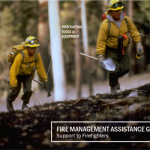Some policyholders have already received additional payments on their claim
It takes only a few minutes to ask the Federal Emergency Management Agency (FEMA) to review a flood insurance claim filed as a result of Hurricane Sandy. And it doesn’t cost anything.
More than 11,500 policyholders of the National Flood Insurance Program (NFIP) have entered the review process and some policyholders have already received additional payments on their claim. The deadline for requesting a review is Sept. 15, 2015.
To be eligible, flood insurance policyholders must have experienced flood damage between
Oct. 27, 2012 and Nov. 6, 2012. Policyholders can call the NFIP’s Hurricane Sandy claims center at 866-337-4262 to request a review of their claim. This review may result in additional payment to the policyholder.
It will be helpful if policyholders have a few key pieces of information when they call:
- The name on the flood insurance policy,
- the address of the damaged property,
- the name of the insurance company, and
- the policy number that was in effect at the time of the loss.
When they call, policyholders will be asked a series of questions to determine whether they qualify for review. Once qualified, policyholders will be called by an NFIP-certified adjuster, who will serve as a caseworker through the review process. The timing of the adjuster’s initial call may be affected by the volume of requests for review. Our goal is to complete most reviews within 90 days of the initial call.
“Getting started in the Sandy Claims Review is as simple as making a call and answering a few questions,” said Roy Wright, Deputy Associate Administrator for FEMA’s Federal Insurance and Mitigation Administration, which runs the NFIP. “We will review the claim file and let the policyholder know whether they are due any more money.”
Policyholders also can go online to www.fema.gov/hurricane-sandy-nfip-claims to download a form to request a review. The completed form may be e-mailed to FEMA-sandyclaimsreview@fema.dhs.gov or faxed to 202-646-7970 to start the process. For individuals who are deaf, hard of hearing, or have a speech disability and use 711 or VRS, please call 866-337-4262. For individuals using a TTY, please call 800-462-7585 to begin the review process.
Policyholders who have already requested their review can call 866-337-4262 if they have questions or need more information. They can also choose to drop out of the review process at any time.
The Sandy claims review process is intended to be simple for the policyholder and does not require paid legal assistance. Additionally, there are several nonprofit service providers ready to offer free advice and answer questions policyholders may have. A list of these advocacy groups can be found at www.fema.gov/hurricane-sandy-nfip-claims.
FEMA’s mission is to support our citizens and first responders to ensure that as a nation we work together to build, sustain, and improve our capability to prepare for, protect against, respond to, recover from, and mitigate all hazards.
Follow FEMA online at www.twitter.com/FEMASandy,www.twitter.com/fema, www.facebook.com/FEMASandy, www.facebook.com/fema, www.fema.gov/blog, and www.youtube.com/fema.Also, follow Administrator Craig Fugate’s activities at www.twitter.com/craigatfema.
The social media links provided are for reference only. FEMA does not endorse any non-government websites, companies or applications.
Link to original:
Starting your Sandy Claims Review is as Simple as Making a Call




